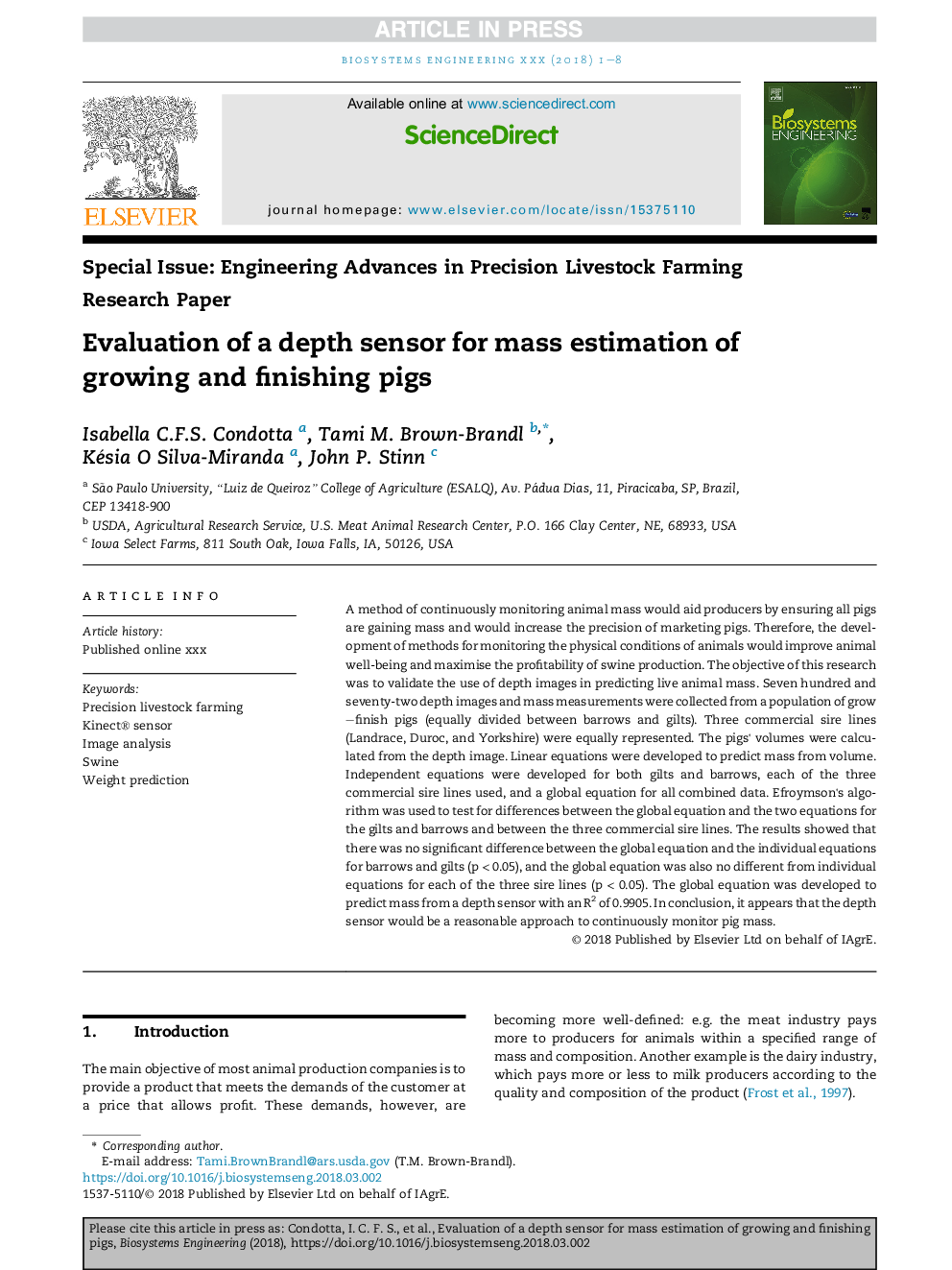| Article ID | Journal | Published Year | Pages | File Type |
|---|---|---|---|---|
| 11019816 | Biosystems Engineering | 2018 | 8 Pages |
Abstract
A method of continuously monitoring animal mass would aid producers by ensuring all pigs are gaining mass and would increase the precision of marketing pigs. Therefore, the development of methods for monitoring the physical conditions of animals would improve animal well-being and maximise the profitability of swine production. The objective of this research was to validate the use of depth images in predicting live animal mass. Seven hundred and seventy-two depth images and mass measurements were collected from a population of grow-finish pigs (equally divided between barrows and gilts). Three commercial sire lines (Landrace, Duroc, and Yorkshire) were equally represented. The pigs' volumes were calculated from the depth image. Linear equations were developed to predict mass from volume. Independent equations were developed for both gilts and barrows, each of the three commercial sire lines used, and a global equation for all combined data. Efroymson's algorithm was used to test for differences between the global equation and the two equations for the gilts and barrows and between the three commercial sire lines. The results showed that there was no significant difference between the global equation and the individual equations for barrows and gilts (p < 0.05), and the global equation was also no different from individual equations for each of the three sire lines (p < 0.05). The global equation was developed to predict mass from a depth sensor with an R2 of 0.9905. In conclusion, it appears that the depth sensor would be a reasonable approach to continuously monitor pig mass.
Related Topics
Physical Sciences and Engineering
Engineering
Control and Systems Engineering
Authors
Isabella C.F.S. Condotta, Tami M. Brown-Brandl, Késia O. Silva-Miranda, John P. Stinn,
